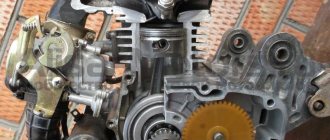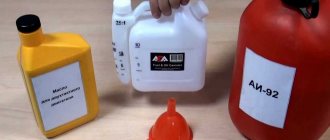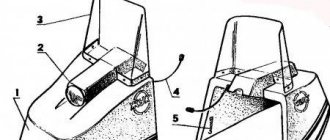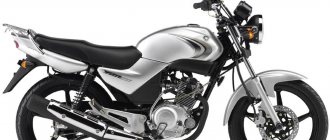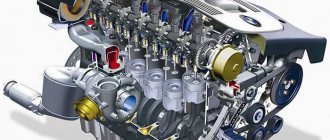For the proper operation of any heating system, additional components will be needed, as with any other piping system. Regardless of the transported working medium (whether gases or liquids), its movement must be directed in one direction. To fulfill such an important requirement, it is necessary to use a reed check valve or other type of shut-off valve.
Check valves are installed in pipeline systems that transport liquid and gaseous media in a single, predetermined direction. Blockage occurs at the moment when the direction of the main flow changes.
What is it like?
A petal type check valve is one of the types of shut-off valves and consists of two spring-loaded flaps that look more like petals. They are installed on a special axis and are used in the construction of heating points and boiler plants.
The most significant disadvantages include weak hydraulic performance. This is due to the fact that even in the “open” position, the flaps will prevent the passage of the working medium that moves inside the pipeline. A gravity check valve is a type of reed valve - a locking device, where the main element is one flap, which is mounted on a special axis, which allows it to rotate freely in the desired direction.
The operating principle of a gravity check valve is as follows:
- when exposed to the pressure of the working medium created by the flow on the sash, it will begin to open;
- if this indicator begins to fall or a reverse flow (reverse) is formed, the flaps, under the influence of their own gravity, begin to fall and the device closes.
Why is such fittings needed?
During the operation of heating systems, there is a risk of hydrodynamic pressure surges in certain sections of the pipeline. As a result, a reverse flow may form when the direction of the main flow changes. When installing such a unit on a bypass, such emergency situations can be avoided, achieving the necessary uninterruption of the operating system. The equipment is designed to prevent the formation of reverse movement of the thermal fluid. There are several varieties of such fittings, so it is extremely important to make the right choice.
The valve used must facilitate the unimpeded passage of the coolant, preventing the formation of reverse movement, and without affecting the technical and operational characteristics of the system used.
Operating principle
To begin with, I would like to draw your attention to the fact that check valves are installed only in cases of extreme necessity, because there is no point in simply equipping the system with such units. This decision should be based on the fact that after installation there will be significant hydraulic resistance, depending on the model used.
Thus, there are some restrictions when installing heating systems with a natural ventilation function. The reason may be a simple lack of pressure of the coolant itself inside the structure. Gravity valves are rather an exception to the rule since they are equipped with a rotary valve. Thanks to this, certain models are capable of opening the coolant path at an operating pressure of 0.001 Bar.
Despite significant design differences, many models are equipped with a spring. It is she who is responsible for the timely and complete opening or closing of the shutter when natural conditions change. This is the principle of operation of a check valve. The hydraulic resistance indicator will depend on the effort expended by the device to overcome the degree of elasticity of the spring used. When choosing components, you should focus on the available parameters, such as the massiveness and elasticity of the mounted spring. The main task of the spring is to hold the locking device in its normal state - completely closed.
In this case, the flow of the working medium, which will flow from one side, can overcome the elastic force of the spring, which will lead to the opening of the damper. The slightest attempt to change the direction of the flow will not produce any results, since the locking element will instantly slam shut based on the new flow of the working medium inside the housing. A shut-off element is located in this area, which makes the check valve completely sealed.
Materials used for the manufacture of such fittings:
- steel;
- brass;
- cast iron.
Tools
- Small pliers or special wrench
- Open-end wrench 9
- 14mm socket wrench or socket
- Socket wrench 8
- A set of measuring probes, preferably with a pitch of 0.02 mm
We free access to the cylinder head: depending on the scooter model, we remove the hood or seat tank. We find the valve cover there, unscrew the four 8mm bolts and remove it from the engine.
The valve cover looks like this. In my case, to get to it I had to remove the hood, saddle and seat tank.
There is a generator casing on the right side of the engine - remove it. If you are too lazy to remove it, just take out the plug. The plug is located in the upper part of the case and can be removed using a regular screwdriver. Through the plug we will control the position of the marks on the rotor.
Reed valves
To make this element you will need high-quality stainless steel or brass. The element consists of the following parts:
- a seal with a seat (it is to this that the disk is adjacent when closed);
- disc valve, fastening is carried out according to the principle of a rotary lever;
- For ease of maintenance, the housing is made in the form of a tee.
There are several versions of the product: the petal can be spring-loaded or free. In the first case, the sash will close automatically using a spring, so the lock will operate in a strictly vertical position. Due to the principle of operation used, the product has several specific names - firecracker, turn signal and gravitational device.
The principle of operation of the element is as follows: the coolant moving in a given direction displaces the shut-off element (disk) and moves freely further through the system. When changing the direction of movement, the shutter, under the influence of a spring, will automatically slam shut, which will lead to blocking the passage. When installing heating systems in private homes, you should pay attention to the following characteristics:
- a device not equipped with a spring will operate exclusively in a vertical position;
- To adjust the axis and disassemble the unit, there is a bolt on the side of the body;
- low hydraulic resistance;
- the maximum permissible operating pressure will be 16 Bar;
- The hole diameter will be 1.5-5 cm (no more than a couple of inches).
How is installation carried out?
When using a back pressure unit, we often talk about arranging systems according to the boiler piping scheme. If there is a need to create a single cascade of several heat generators, or different coolants, then they are linked. In this way, it was possible to avoid the formation of parasitic flows, which a properly installed valve prevents. Due to this, parallel inclusions of several heat sources can occur. If the medium is supplied via a pump, then any type of valve can be installed. But if there is natural circulation, you will need to install a gravity valve.
Rules that are recommended to be followed:
- Depending on the principle by which the switching is carried out, the operating pressure indicator will also depend. Above 16 bar, a flange type is used, but if below, then a coupling type is used.
- The pump that makes the circulation happen must be installed before the other devices described below, and not after them.
- The product is installed according to the diagram attached in the technical data sheet.
- To supply a flow of working fluid to cottages, a pressure of 3 bar is sufficient. If the building is heated by a network, the temperature will be about 95°C. Before installation, you should consider all available parameters, and only then select a unit.
- The choice should be based on indicators such as temperature conditions and operating pressure levels.
This type of valve is considered one of the main elements of any heating system. Based on well-known conditions, its work is aimed at eliminating the possibility of an emergency, while other units are aimed at increasing the efficiency indicator. Before purchasing, you should consider many models, compare their characteristics and learn many nuances regarding their installation and subsequent operation. If emergency situations arise, it is recommended to immediately contact specialists.
Signs that a check is needed
If difficulties arise with starting the engine and in a number of other situations, it is necessary to be able to check the functionality of the starting enrichment. Thoughts about a malfunction of the solenoid valve may arise in different cases.
Let's take a closer look at the main reasons:
- the first morning start of a cold scooter engine is problematic;
- it is difficult to start a cooled scooter engine after a long stay;
- fuel consumption significantly exceeds the consumption indicated in the passport;
- The scooter's power unit is quite unstable at idle;
- a warm engine does not maintain speed, and a cold engine functions intermittently.
Installation of equipment on the heating system
Often, devices of this type are used when piping boilers located in the heating system. The relevance of this issue increases at the moment when it becomes necessary to connect several heat generators in a cascade or make the operation of several boilers simultaneously synchronized.
The installed valve will not allow the formation of parasitic flows inside the system, which often arise when parallel heat sources are turned on. Provided that the supply of the working medium will be carried out through a mounted pump, any of the known schemes for its installation using shutter mechanisms can be used.
When using gravity systems, it is recommended to give preference to reed or gravity valves. The rules for installation when using such equipment are the same. However, before purchasing all the necessary auxiliary components, you need to find out as much information as possible about the characteristics, compare with several similar units and get full advice from a specialist on this issue.
Communities › Daewoo Matiz Club › Blog › Intake and exhaust valves are jammed! Because of which ?
Hello everyone, please give me some advice! The first time I got into the engine to adjust the valves was at 70,000 miles, they did everything well, but I didn’t notice much of a difference! At a mileage of 83 thousand, problems arose with cold starting, everything is described in detail in my blog, so after starting the engine doubled and ran very unstable, I rushed to change it from the simplest: spark plugs, high voltage wires, both gasoline filters, washed the injectors, distributor cap, nothing did not help ! I went to the service station where they immediately told me that the valves needed to be adjusted, they did it, it turned out that the valves were clamped, the gaps were set to 0.20 and 0.30, but after 3250 km the engine started working unstably again when cold, under warranty they did the adjustment again, again all the valves were clamped! The question is why, is it really the problem with the seats or the valves themselves? As a result, they told me to come and check the gaps after 2000 km! Thank you in advance !
